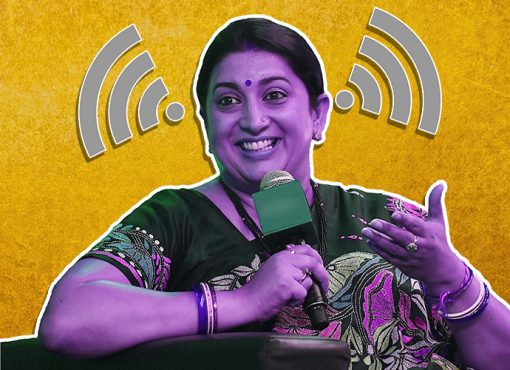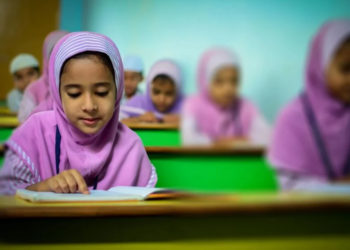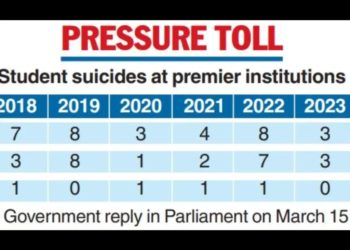Minister of Information and Broadcasting Smriti Irani does not know really when to leave well alone. And journalists are now rushing to the National Media Centre following an alert that she is moving to acquire the one hall from where many accredited journalists operate for a creche for her Ministry employees.
The National Media Centre close to the Ministries and Parliament, has come as a major saver for scribes who need to file their stories without traversing the long trek to their offices that are now scattered all over the national capital region. At least 100 journalists can operate from there in air conditioned comfort, with computers and other facilities. Irani has been eyeing this space for a while now.
The first notice to clear out was served to the Press Association scribes, occupying just a small area of the NMC, with space for a maximum seating capacity of three or four persons. The Association went to the High Court and has obtained a stay on the eviction notice.
Justice Rajiv Shakdher also issued notice to the Press Information Bureau (PIB) and the Ministry of Information and Broadcasting seeking their responses by May 9 to the Press Association’s plea challenging the government’s decision.
“Meanwhile, there shall be stay of the order (of eviction),” the court said and asked the government to “try and work out” the issue as reported by the news agencies at the time.
The government, defending its decision, said the petitioner body — Press Association — was asked to move out as the Indian Information Service was moving into the NMC. And it claimed that the room was “state largesse” given free of cost to the association, comprising over 700 accredited journalists, and it had no legal right to continue occupying it.
It also told the court that the order asking the association to vacate the room did not prevent the scribes from accessing the facilities of the NMC, nor did it take away their accreditation.
The court, however, did not accept the contention, saying that despite not having any right to government housing, scribes have been provided this benefit.
The association’s counsel alleged in the court that it was asked to vacate the room in question as it had joined the protests against the attacks on journalists.
It told the court that since 1965, it had a room in the Shastri Bhawan, and thereafter when the NMC was built in 2014, the association was asked to shift there in July 2014.
Accredited journalists have called a meeting now to discuss the new ‘threat’ and decide what needs to be done. Irani has fallen foul of the media, by using concerns over fake news to issue a directive to ‘punish’ Press Information Bureau accredited journalists with disqualification. This united the media organisations to strongly condemn the move, and the protest finally alerted Prime Minister Narendra Modi to ‘intervene’ and issue instructions to revoke the order.
That Irani could not have taken a decision without the nod, or perhaps even the insistence, of the PMO is well known with journalist Arun Shourie going on the record in a media interview to say that this could not have happened otherwise. Irani was pushing the order legitimising government intervention late at night, joining swords not with just opposition leaders like Congress party’s Ahmed Patel but also senior scribes. By the morning the anger had spread with all journalist bodies issuing statements condemning the move.
PM Modi had clearly no room left but to retract. The second time after the one day gag order on NDTV that also attracted similar condemnation from the journalists who united behind the television news channel, against the government.
Irani was shifted from the Ministry of Human Resource Development, with her presence being seen as a ‘red rag’ by the students after the Jawharlal Nehru University and more importantly the Hyderabad Central University incidents. The suicide of Dalit scholar Rohith Vemula was taken as a bone of contention by Irani whose confrontationist handling of the situation had placed her in not particularly favourable spotlights.
Interestingly, the National Media centre inaugurated by the UPA government was seen as a centre for journalists, with working facilities, as well as the venue for government press conferences all under one roof. It is a large building with some of the space now occupied by PIB officers. As a senior journalist who is a regular at the NMC said, “it has an excellent location and is a godsend for us as we are able to file our stories in record time. I don’t know why they want the main hall for a creche when there is sufficient space in the rest of the centre to be so used.”
For a while now the Ministry under Irani now has been eyeing the Centre to resolve its “space cruch” issues.





